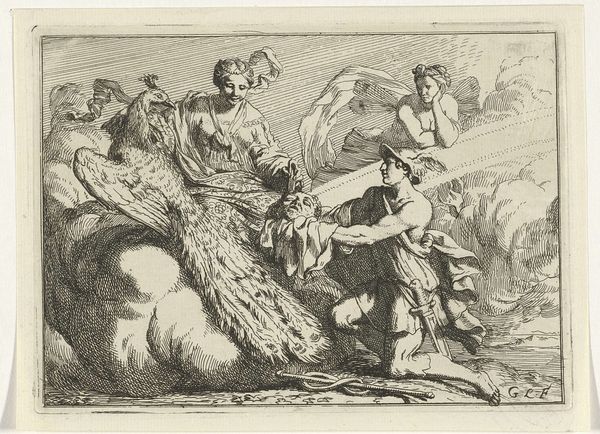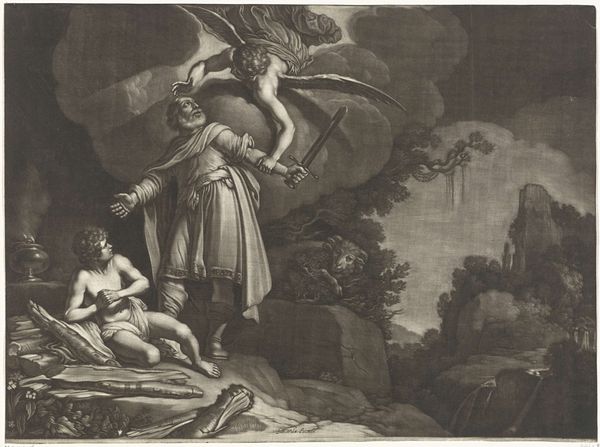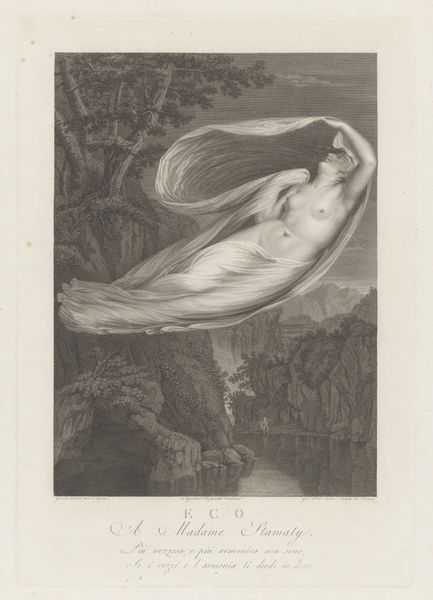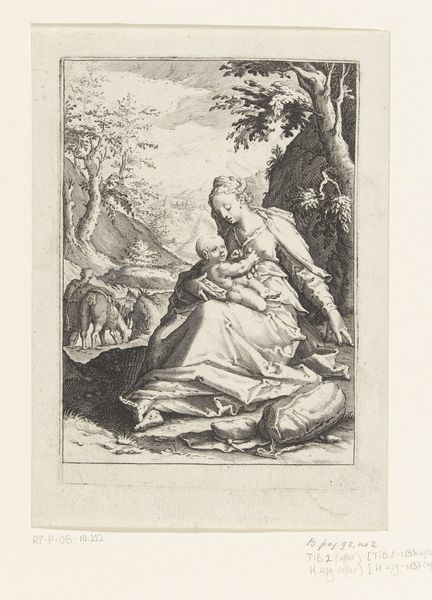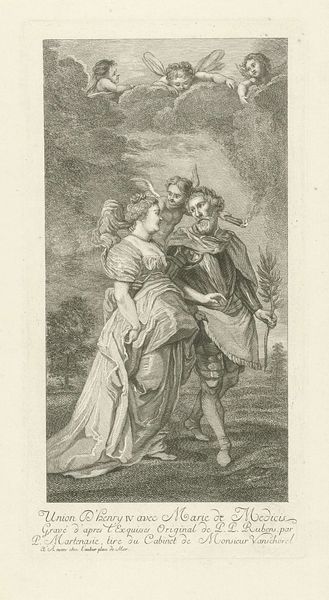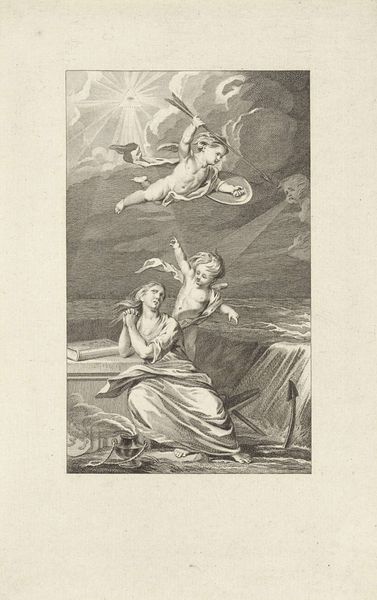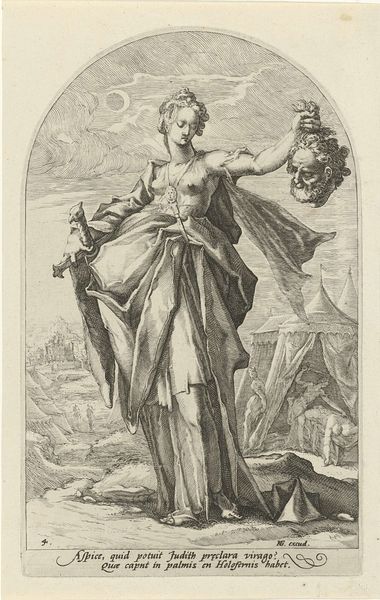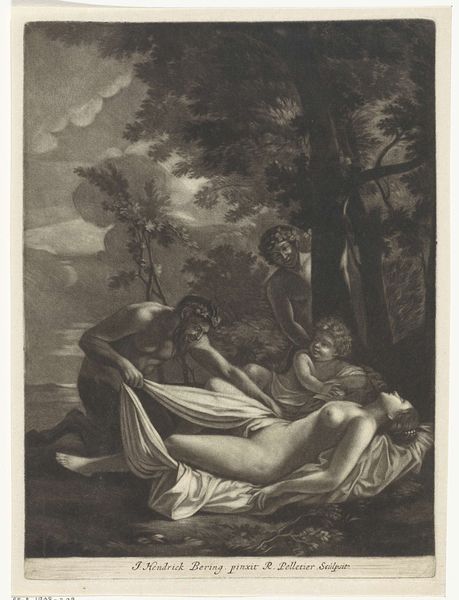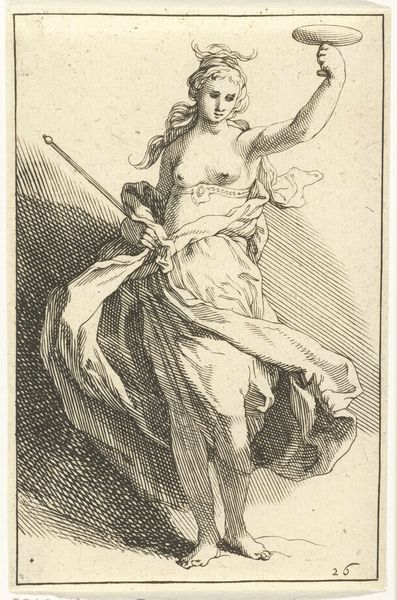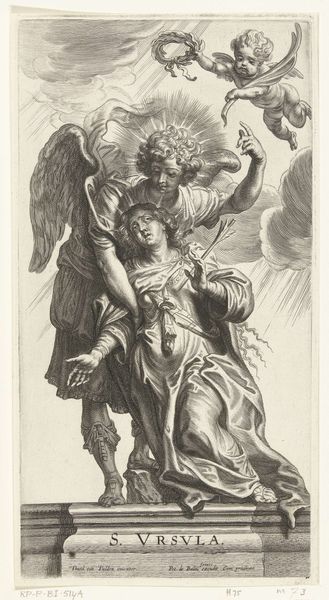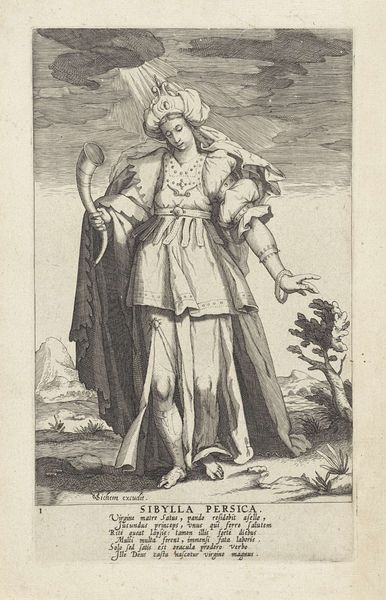
Maria Magdalena als boetelinge in woestijn geknield voor crucifix 1623 - 1660
0:00
0:00
drawing, print, engraving
#
drawing
#
baroque
# print
#
landscape
#
figuration
#
line
#
history-painting
#
engraving
Dimensions: height 140 mm, width 253 mm
Copyright: Rijks Museum: Open Domain
Editor: Here we have "Maria Magdalena als boetelinge in woestijn geknield voor crucifix," dating from 1623 to 1660, and attributed to Pieter de Bailliu. It's an engraving. The figure almost seems swallowed by the landscape, yet radiates inner strength. What strikes you most about its visual composition? Curator: The strategic placement of the figure in relation to the landscape elements dictates the viewer's engagement. Notice how the strong diagonal of the rocks on the left is mirrored in the angle of her posture, creating a dynamic visual tension. The stark contrast of light and shadow is also crucial to examine in this print. How do these elements affect our reading of the central subject? Editor: I see what you mean. The sharp lines in the rocks are echoed in her body. Does the medium, print, limit how dramatic those contrasts can be? Curator: In fact, it elevates it! The incisive engraving technique results in a precision of line and shading, underscoring the figure’s penitent struggle against the vast wilderness. Look closely at the sky—the contrasting darkness versus emanating beams–then, to the textures De Bailliu creates to differentiate her flowing gown from the roughness of the terrain. Note also how the halos frame the figure against stark clouds. It gives directionality to the gaze. What's your take on how he accomplishes this without using much color? Editor: He contrasts the dark clothing with her exposed flesh, with the lines defining the muscles to highlight Mary’s humanity, as if suffering is a purely physical struggle. Are these strategic visual echoes common in Baroque art? Curator: They are pervasive across periods and styles, though rendered distinctively based on period preferences, artists, location, or medium capabilities. The artist employs formal means – composition, line, contrast – to convey narrative, emotion, and symbolism with stunning potency. This detailed consideration of its inherent qualities leads to appreciation of art. Editor: This piece seemed simple, at first glance, but now I'm appreciating how carefully the artist uses lines to create mood. Thanks! Curator: And you’ve rightly grasped the profound capabilities within print-making through Baroque formalism.
Comments
No comments
Be the first to comment and join the conversation on the ultimate creative platform.
